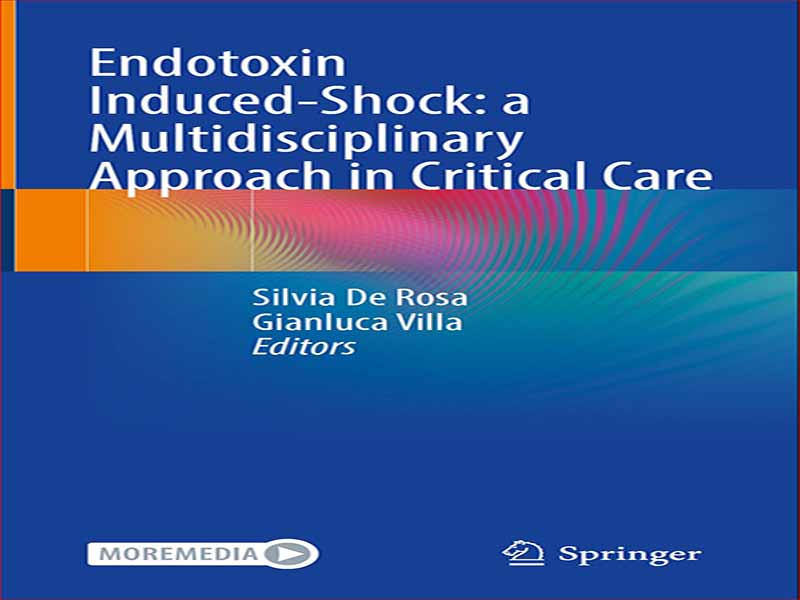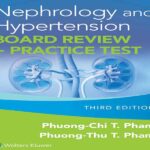- عنوان کتاب: Endotoxin Induced-Shock: a Multidisciplinary Approach in Critical Care
- نویسنده: Silvia De Rosa
- حوزه: مراقبت های ویژه
- سال انتشار: 2023
- تعداد صفحه: 132
- زبان اصلی: انگلیسی
- نوع فایل: pdf
- حجم فایل: 4.21 مگابایت
این مفهوم که اندوتوکسین، بخشی نامحلول از سلول باکتری، ماده ای سمی است که می تواند تصویری معمولی از عفونت باکتریایی را ایجاد کند، حتی بدون حضور باکتری های زنده، برای اولین بار توسط ریچارد فایفر در سال 1892 معرفی شد. پس از آن، سالهای زیادی برای توصیف ساختار دقیق، عملکرد و مکانیسم اثر اندوتوکسین مورد نیاز بود که امروزه به عنوان لیپوپلی ساکارید (LPS) شناخته میشود.
LPS جزء اصلی دیواره سلولی باکتری های گرم منفی است که 75 درصد از سطح برگچه بیرونی غشای خارجی دیواره سلولی را بازیابی می کند. این یک گلیکولیپید متشکل از یک بخش لیپید آبگریز (لیپید A) است که در برگچه بیرونی لنگر انداخته و یک بخش پلی ساکارید آبدوست که خارج از سلول گسترش می یابد. بخش پلی ساکارید به دو حوزه تقسیم می شود: ناحیه هسته و آنتی ژن O (همچنین به نام زنجیره O). زنجیره O از چندین واحد الیگوساکارید تشکیل شده است و از طریق ناحیه هسته به لیپید A گره خورده است. نقش اصلی مولکول های LPS ایجاد یک ساختار آبگریز است که منجر به ایجاد یک سد نفوذپذیری می شود که از باکتری ها در برابر عوامل ضد میکروبی محافظت می کند.
LPS توسط اکثر باکتری های گرم منفی تولید می شود، به استثنای معدودی که به عنوان مثال توسط Treponema pallidum ارائه می شود. اگرچه ساختار LPS به خوبی حفظ شده است، تفاوت هایی را می توان در بین گونه های باکتری مشاهده کرد. به عنوان مثال، یک LPS بدون زنجیره O توسط برخی از گونههای باکتریهای گرم منفی تولید میشود و به آن LPS «زمخت» میگویند، در مقابل LPS «صاف» که شامل زنجیره O میشود. LPS جزئی از دیواره باکتری است که برای بقا در یک محیط خصمانه ضروری است. در واقع، باکتری های گرم منفی که فاقد LPS هستند یا دارای LPS بدون زنجیره O هستند، به آنتی بیوتیک ها و به طور کلی، به مکانیسم های دفاعی میزبان حساس تر هستند.
در میان اجزای LPS، لیپید A سزاوار توجه ویژه است، زیرا مسئول فعال کردن سیستم ایمنی و القای اثرات تب زایی و سمی است. ساختار لیپید A می تواند در بین باکتری های گرم منفی از نظر تعداد و طول زنجیره های اسید چرب متصل و وجود یا عدم وجود گروه های فسفات یا سایر باقیمانده ها متفاوت باشد. به طور کلی، در بیشتر موارد، LPS توسط یک ستون فقرات دی گلوکوزامین فسفریله شده در موقعیت های 1 و 4 و با 5 یا 6 زنجیره آسیل چرب آسیله می شود. رایج ترین زنجیره آسیل چرب اسید 3-هیدروکسی-تترا-دکانوینیک است. مطالعات نشان داد که تغییرات لیپید A می تواند باعث تغییرات در فعالیت های بیولوژیکی آن شود. در واقع، ساختار متغیر لیپید A اثر محرک یا بازدارنده آن را تعیین می کند. به عنوان مثال، لیپید A با ستون فقرات دی گلوکوزامین، دو فسفات و شش زنجیره آسیل چرب، توسط مجموعه فاکتور 2 تمایز میلوئیدی میزبان و گیرنده شبه 4 (MD-2-TLR4) به بهترین وجه تشخیص داده می شود.
LPS در غشای سلولی باکتریهای بیهوازی، که در میکروبیوتای معمولی روده انسان وجود دارد، دارای یک لیپید A کمآسیله (تترا یا پنتا آسیل) است که یک مهارکننده قوی TLR4 است. در نتیجه، با خاموش کردن مسیر TLR4، تحمل میزبان در برابر میکروبهای روده را تسهیل میکند. با این حال، مشخص نیست که آیا این پدیده بر پیشرفت عفونت تأثیری دارد یا خیر. در واقع، ساختار لیپید A سودوموناس آئروژینوزا و همچنین بسیاری از باکتریهای گرم منفی دیگر دارای شش زنجیره اسید چرب نیست. Yersinia pestis در عوض قادر به تولید LPS هگزا آسیل در دمای 21-27 درجه سانتیگراد و تترا آسیل LPS در دمای 37 درجه سانتیگراد است و بنابراین می تواند از دفاع خط اول میزبان در پستانداران فرار کند. علاوه بر این، یک سویه اصلاح شده ژنتیکی از Yersinia pestis که LPS هگزاسیله شده را در دمای 37 درجه سانتیگراد تولید میکند، به نظر میرسد که غیرخاصیت باشد، زیرا میتواند تشخیص زودهنگام عفونت و شروع موثر سیگنالدهی ایمنی را تسهیل کند. در طول عفونت مزمن، تغییرات مولکول های LPS امکان پذیر است و باعث تسهیل گریز از دفاع ایمنی میزبان و سازگاری بیوفیلم می شود.
The concept that endotoxin, an insoluble part of the bacterial cell, was a toxic substance able to evoke a typical picture of bacterial infection, even without the presence of living bacteria was introduced for the first time by Richard Pfeiffer in 1892. Subsequently, many years were needed to characterize the exact structure, function, and mechanism of action of endotoxin, nowadays recognized as lipopolysaccharide (LPS).
LPS is the major component of the cell wall of Gram-negative bacteria, recovering the 75% of the surface of the outer leaflet of the outer membrane of the cell wall. It is a glycolipid composed of a hydrophobic lipid part (lipid A) anchored in the outer leaflet and a hydrophilic polysaccharide part that extends outside the cell. The polysaccharide part is divided into two domains: the core region and the O antigen (also named O-chain). The O-chain is composed of several units of oligosaccharide and is tied to lipid A through the core region. The main role of LPS molecules is to create a hydrophobic structure that results in a permeability barrier that protects bacteria from antimicrobial factors.
LPS is produced by most Gram-negative bacteria, with a few exceptions represented for example by Treponema pallidum. Although the structure of LPS is well conserved, differences can be observed among species of bacteria. For example, an LPS without the O-chain is produced by some species of Gram-negative bacteria and it is called as “rough” LPS, as opposed to a “smooth” LPS, which includes the O-chain. LPS is a component of the bacterial wall essential for survival in a hostile environment. Indeed, Gram-negative bacteria that lack LPS or have LPS without an O-chain are more sensitive to antibiotics and, in general, to the host’s defense mechanisms.
Among LPS components, lipid A deserves particular attention, as it is responsible for activating the immune system and for inducing pyrogenic and toxic effects. The structure of lipid A can differ among Gram-negative bacteria in the number and the length of fatty acid chains attached and the presence or absence of phosphate groups or other residues. Generally, in most cases, LPS is constituted by a diglucosamine backbone phosphorylated at positions 1 and 4 and acylated with 5 or 6 fatty acyl chains. The most present fatty acyl chain is the 3-hydroxy-tetra-decanoinc acid. Studies demonstrated that alterations of lipid A can cause alterations in its biological activities. Indeed, the variable structure of lipid A determines its stimulatory or inhibitory action. For example, lipid A with a diglucosamine backbone, two phosphates, and six fatty acyl chains, is best sensed by the host’s complex of myeloid differentiation factor 2 and the toll-like receptor 4 (MD-2-TLR4).
LPS in the cell membrane of anaerobic Bacteroidales, which are present in the commensal microbiota of the human gut, has an under-acylated (tetra- or penta-acyl) lipid A that is a potent TLR4 inhibitor. Consequently, by silencing the TLR4 pathway, it facilitates the host’s tolerance of gut microbes. However, it is unknown if this phenomenon has any effect on the progression of infection. In fact, the lipid A structure of Pseudomonas aeruginosa but also of many other Gram-negative bacteria does not possess six fatty acyl chains. Yersinia pestis instead is able to produce hexa-acyl LPS at 21–27 °C and tetra-acyl LPS at 37 °C, and thus it is able to escape the host’s first-line defense in mammals. Moreover, a genetically modified strain of Yersinia pestis which produces hexa-acylated LPS at 37 °C appeared to be avirulent, as it is able to facilitate the early recognition of infection and the effective onset of immune signaling. During chronic infection, modifications of LPS molecules are possible and happen to facilitate the evasion of host immune defense and biofilm adaptation.
این کتاب را میتوانید بصورت رایگان از لینک زیر دانلود نمایید.
Download: Endotoxin Induced-Shock: a Multidisciplinary Approach in Critical Care



































نظرات کاربران